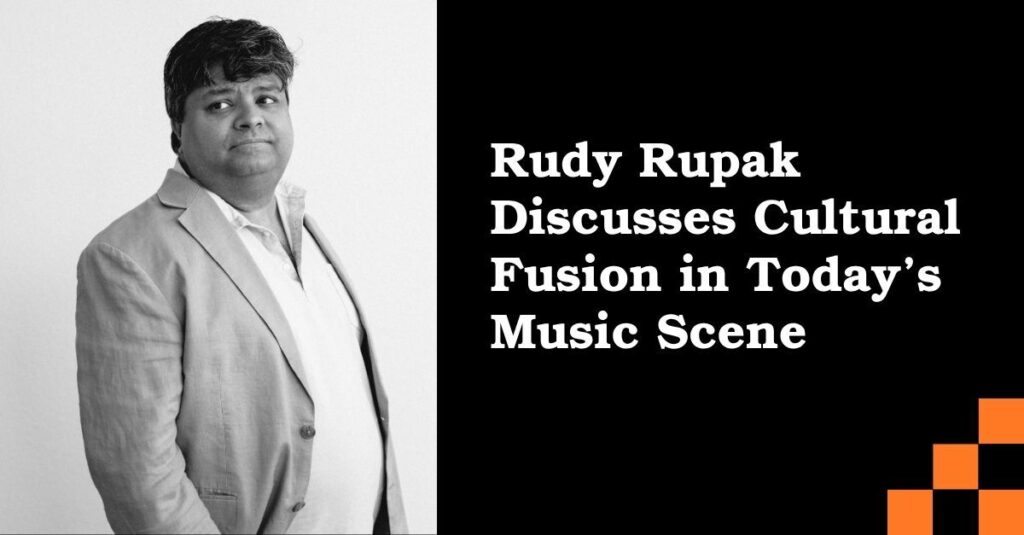Music has always been more than just sound; it’s a reflection of life, emotion, and identity. In today’s global world, artists no longer create within cultural boundaries. Instead, they draw inspiration from every corner of the planet. Rudy Rupak shares his insights on how cultural fusion is transforming modern music, connecting people, and reshaping how we experience sound.
How Music Has Evolved Across Cultures
Over time, music has evolved from regional traditions into a global language. Rudy Rupak explains that today’s artists often blend elements from multiple genres, creating sounds that appeal to listeners everywhere.
Key Points:
- Globalization has made cultural exchange easier than ever.
- Artists now collaborate beyond borders, mixing traditional and modern influences.
- Genres like Afrobeats, K-pop, and Latin pop represent this new musical identity.
In the past, an artist’s sound was shaped mostly by local culture. But the internet changed that. Now, a producer in Africa can collaborate with a singer in Europe or a DJ in Asia, creating songs that feel both familiar and new. This kind of fusion doesn’t just expand creativity—it builds connection and understanding among diverse audiences.
The Role of Technology in Music Fusion
Technology is one of the main reasons cultural fusion has grown so quickly. Rudy Rupak highlights how digital tools and streaming platforms have given artists easy access to global sounds and listeners.
Streaming platforms like Spotify, Apple Music, and YouTube allow musicians to reach people in any country within seconds. Social media has also turned music into a shared global experience. A dance trend or remix can go viral in one region and quickly spread across continents.
Technology also helps musicians experiment. Modern software lets artists mix instruments, beats, and rhythms from all over the world. Producers can now include sounds of the Indian sitar, African drums, or Latin guitar—all in one track. As Rudy Rupak notes, this access helps create music that celebrates diversity while staying true to its roots.
Artists Leading the Way in Cultural Fusion
Some of today’s biggest stars are leading examples of musical fusion. Rudy Rupak mentions artists like Rosalía, who combines flamenco traditions with hip-hop and pop influences, and BTS, who mix Korean lyrics with Western melodies and production styles. Similarly, Burnaboy, Bad Bunny, and Shakira have used their cultural backgrounds to create music that resonates globally.
These musicians prove that cultural fusion isn’t about abandoning tradition—it’s about evolving it. They use their heritage as a foundation while exploring new creative directions. Listeners love these sounds because they feel real, fresh, and emotionally honest. The blending of cultures creates something universal, something everyone can feel connected to.
Why Collaboration and Storytelling Matter
Rudy Rupak believes that when artists from different cultures collaborate, they do more than merge music—they share stories. Behind every beat or lyric lies a piece of personal or cultural history. That storytelling makes fusion music powerful and meaningful.
Key Points:
- Collaboration builds bridges between cultures and communities.
- Fusion songs often tell shared human stories — about love, hope, or struggle.
- Respectful collaboration encourages cultural appreciation, not appropriation.
Examples like “Despacito” and “Jerusalema” show how music can spread joy and unity across languages and borders. These songs became global hits not only for their rhythm but also for their spirit. They remind us that music, at its best, brings people together.
Rupak notes that when collaboration is done with respect, it can highlight cultural beauty without exploiting it. Genuine partnerships allow artists to learn from one another and create something new while honoring their origins.
The Business Side of Global Music
The rise of cultural fusion has also transformed the music industry. Rudy Rupak explains that record labels and event organizers now focus more on international collaborations. Festivals and tours often feature artists from different continents sharing the same stage.
Streaming data shows that global listeners are more open to non-English songs than ever before. Ten years ago, few international artists topped Western charts. Today, songs in Spanish, Korean, and even Swahili are global hits. This shift has opened doors for independent musicians who can now reach fans directly online.
Cultural fusion is not just an artistic trend—it’s also an economic opportunity. By blending sounds and languages, artists can connect with diverse audiences, build global fanbases, and spark cultural curiosity among listeners everywhere.
Staying True to Culture
While fusion can be exciting, Rudy Rupak reminds us that authenticity is essential. Artists should always respect the cultures they draw inspiration from. Borrowing sounds without understanding their meaning can lead to cultural misunderstanding or insensitivity.
True fusion music is built on learning and appreciation. When artists take time to understand another culture’s rhythms, stories, and traditions, their work becomes more meaningful. Audiences respond positively to authenticity—they can sense when music comes from a place of respect and passion.
As Rudy Rupak says, fusion works best when it feels honest. Music made with genuine intent becomes timeless, because it speaks to shared human experiences.
The Future of Cultural Fusion in Music
Looking ahead, Rudy Rupak believes cultural fusion will continue to grow. Young musicians are already breaking barriers with innovative sounds that combine different traditions. As technology evolves, collaborations across borders will become even smoother.
Artificial intelligence, online production tools, and real-time language translation will make it easier for artists to co-create globally. Music schools and online platforms are also teaching students about both traditional instruments and digital production, encouraging them to experiment with cultural blends.
The result is a future music landscape that’s not divided by genre or geography—but connected through creativity and shared emotion.
Conclusion
Rudy Rupak insights on cultural fusion show that today’s music scene is more connected and expressive than ever before. Artists from every corner of the world are using sound to tell stories that transcend culture, language, and tradition.
Cultural fusion isn’t just about mixing beats—it’s about understanding one another. Every song that blends styles becomes a bridge between people, reminding us that our differences can make something beautiful together.
In Rudy Rupak’s view, the future of music lies in unity through diversity—a world where every rhythm tells a shared human story.






